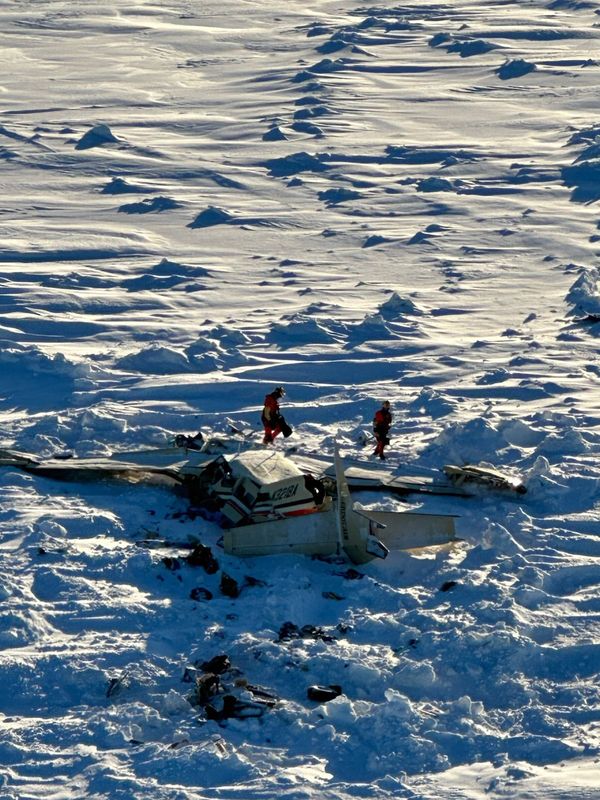
Among the many sobering projections of harm to be caused by climate change is this eye-popping statistic: on average, according to economists, a rise in local temperature of half a degree Celsius is associated with a ten to 20 percent increase in the risk of deadly conflict. If accurate, that means the likelihood of such strife is swiftly rising. UN climate scientists estimate that manmade emissions have generated one degree of global warming since preindustrial times, and because the pace of climate change is fast accelerating, they predict another half a degree of warming as soon as 2030. Tropical areas will have even more extreme warming, with a correspondingly higher risk of climate-related insecurity.
Ending or preventing conflicts exacerbated by climate change requires a faster and different approach than addressing climate change itself. Many governments have begun to curb emissions, but they are gradually phasing in their climate mitigation efforts. For example, 120 countries have embraced a net-zero carbon emission target by 2050—a worthy goal that could prevent the earth from eventually becoming uninhabitable. But millions of people around the world are already experiencing record heat waves, extreme precipitation, and rising sea levels—changes that disrupt livelihoods; exacerbate food insecurity, water scarcity, and resource competition; and spur migration. Tackling climate change is a necessary but inescapably longer-term endeavor. Conflict prevention must happen now.
The relationship between climate and conflict is neither simple nor linear. The same climate impacts can produce very different conflict outcomes depending on the political response. In some instances, rising temperatures and uneven rainfall generate scarcity; in others, climate change—and human responses to it—unlocks new resources. While some countries manage climate-induced competition well, others don’t manage it at all—making conflict more likely. The relationship between climate and conflict can also be inverted: conflict and criminality can worsen climate change and impede mitigation efforts, as illegal logging has done in the Amazon.
In short, the impact of climate change depends heavily on how states are governed. Climate matters when it comes to war and peace, but the politics and policies surrounding climate matter even more. For this reason, the response to climate change cannot be limited to curbing its shocks. Rather, the focus will need to be on bolstering states’ ability to withstand those shocks and ensuring the resilience of their most vulnerable communities. Doing so will require understanding the complex political dynamics that either enable societies to manage environmental change or propel them toward violence.
A CLIMATE FOR CONFLICT
Northern Nigeria is a textbook case of environmental changes stoking deadly conflict. Starting in the 1970s, the region has experienced frequent droughts as a result of climate change, and the Sahara has steadily advanced southward into Nigeria, causing the desertification of an estimated 351,000 hectares of land annually. Many natural water sources have dried up as a result, diminishing pastures and farmland. In the most affected northern Nigerian states, these environmental changes have intensified long-standing competition between herders and farmers over dwindling resources. Large numbers of herders have migrated south in search of productive land and in doing so have come into conflict with settled crop farmers in central Nigeria. Both communities have at times mobilized armed groups for protection. The resulting violence has overextended Nigeria’s military, which was already stretched thin from its war against the deadly jihadi group Boko Haram. Nigerian investigative journalists reported that armed violence by “bandits”—a term that refers to both herder-allied and criminal groups in the northern states— was responsible for 875 reported fatalities between January and September 2019. That number is more than twice the 370 fatalities attributed to Boko Haram over the same period.
Northern Nigeria is hardly alone. Around the world, climate change is increasing the risk of violent conflict by discrediting central governments, prompting clashes over resources, and boosting the recruiting appeal of nonstate armed groups. In northeast Syria, for instance, a severe drought, exacerbated by poor water management policies, lasted from 2006 to 2011. Among families dependent on agriculture, 75 percent suffered crop failures, and herders lost nearly 85 percent of their livestock. Syria’s 2011 uprising had many causes—first and foremost the government’s brutal repression of the initial protests. But the drought must surely be counted among them, as popular unrest and violent clashes began in cities already strained by food insecurity and the influx of hundreds of thousands of rural Syrians displaced by the drought.
Climate change is increasing the risk of violent conflict by discrediting central governments, prompting clashes over resources, and boosting the appeal of nonstate armed groups.
Climate change has also increased tensions between countries. Consider the dispute among Egypt, Sudan, and Ethiopia over the Grand Ethiopian Renaissance Dam on the Nile River. Rising temperatures and falling precipitation portend greater water scarcity across the Nile basin and have complicated already arduous negotiations over the dam. Egypt fears that the dam will constrict its main water supply and has threatened military action to prevent the structure’s completion. While an immediate war is unlikely, the talks have been stalled since Ethiopia began impounding water this summer; if a major drought occurs without water agreements in place, it may be harder to avoid a conflict. In Central Asia, rising temperatures have inflamed transboundary water disputes among Kazakhstan, Kyrgyzstan, Tajikistan, and Uzbekistan. And in the Mekong River basin, tensions continue to simmer among downstream states grappling with a combination of drought, floods, and opaque water management practices at China’s 11 upstream dams.
Many countries also face growing pressures from climate-related migration, spurred by collapsing agricultural sectors and increasingly harsh living conditions. In Central America, climate change, coupled with domestic insecurity and economic stagnation, has displaced hundreds of thousands of people in recent years, with many more expected to follow. The World Bank projects there will be more than 140 million internal climate migrants across sub-Saharan Africa, South Asia, and Latin America by 2050. The impact will be the greatest in tropical countries where the temperature rise will be steepest, but other nations will be strained as well. Cross-border migration can put newcomers in competition with locals for limited economic opportunities and government support, leading to sociopolitical strain, xenophobia, and the scapegoating of refugees—all of which are recipes for deadly violence.
THE HUMAN FACTOR
But one should pause before jumping to generalized conclusions about direct connections between climate change and conflict. Climate-driven conflict is not always a straightforward scramble for diminishing resources, be they water, food, or arable land. Environmental shifts—and, more often, human responses to them—can benefit some communities at the expense of others, driving conflict over unexpected windfalls that are poorly managed. Like northern Nigeria, Mali and Burkina Faso were hit hard by droughts in the 1970s and 1980s. Predictably, the droughts caused desertification and altered the balance of power between farmers and herders. Nomadic groups saw their herds decimated, and many from their ranks were forced to seek employment tending the livestock of settled farmers. Yet, paradoxically, although the amount of arable land contracted each year because of climate change, areas under cultivation grew, as did total agricultural production.
Climate-driven conflict is not always a straightforward scramble for diminishing resources, be they water, food, or arable land.
In the Mopti region of central Mali, for instance, the government and its partners drilled new wells to ease the plight of nomads, making arid areas more livable and inadvertently attracting farmers who, over time, laid claim to the land around the wells originally dug for the herders’ benefit. Government officials and traditional authorities failed to regulate the resulting land-use issues fairly or effectively, and relations between farmers and herders, already frayed, turned violent. In Burkina Faso’s Soum Province, a similar conflict played out between settled and nomadic populations when development projects boosted rice production in the Belehédé municipality. Non-native farmers moved to the newly bountiful areas, stirring tensions with the indigenous population, mainly nomadic herders.
In Mali and Burkina Faso, conflict was not a result of competition over dwindling resources. Rather, groups fought over the spoils of human responses to climate change. New water sources and increased agricultural production brought settled and nomadic peoples into conflict over arable land that authorities proved unable to manage. Some herders, feeling marginalized and neglected by the central authorities, turned to jihadi and self-defense groups for protection they couldn’t get from the state. In both nations, the rise in violence was triggered not by diminishing resources but rather by newfound but poorly regulated resource abundance.
NAVIGATING THE STORM
Right and wrong lessons can be drawn from these examples. The wrong lesson would be that climate change bears little or no responsibility for deadly conflict. As the cases above illustrate, climate change is clearly putting governments and their populations under strain, and conflict prevention will grow more urgent before climate change can be reversed. But if one ought not to understate the effect of climate change on conflict, neither should one overstate or misstate it.
The right lesson is that governments must do more than mitigate the long-term effects of climate change. They must put in place mechanisms that can peacefully regulate access to resources—be they scarce or abundant, within or among states. When governments fail to peacefully regulate access to resources, armed groups—ranging from self-protection militias to criminal gangs to jihadi organizations—can exploit marginalized communities’ distrust of government and fill the vacuum.
Developing nations at risk of future conflict should not face the pressures of a changing climate alone. These countries are paying twice over for the decisions of more developed ones—not only suffering the effects of climate change that they largely did not cause but also being asked to curb their own carbon emissions because of the excesses of others. They deserve increased support from those whose fossil fuel intemperance has caused a climate crisis. Wealthy nations can start by living up to their pledge at the 2011 climate summit in Durban, South Africa, to provide developing countries with $100 billion annually for climate change adaptation and mitigation efforts starting in 2020. UN climate scientists can help by providing more localized climate projections with shorter timelines to guide decision-making by governments and their partners.
As they support developing countries grappling with climate change, Western donors must also heed the lessons of Mali and Burkina Faso and ensure that climate-related development projects reduce rather than exacerbate local divisions. They and their partners should be wary of overly securitized approaches to conflict exacerbated by climate change. It may be necessary to use force against armed nonstate actors, but military measures should be accompanied by political measures (such as dialogue with armed groups), economic measures (such as reforms to formalize or regulate the gray economy and thereby prevent capture by criminal groups), and humanitarian measures for those most affected by environmental changes.
Unless developing nations can match climate adaptation efforts with efforts to address local divisions and make their politics more inclusive, they will remain, figuratively and literally, in the eye of the gathering storm.







